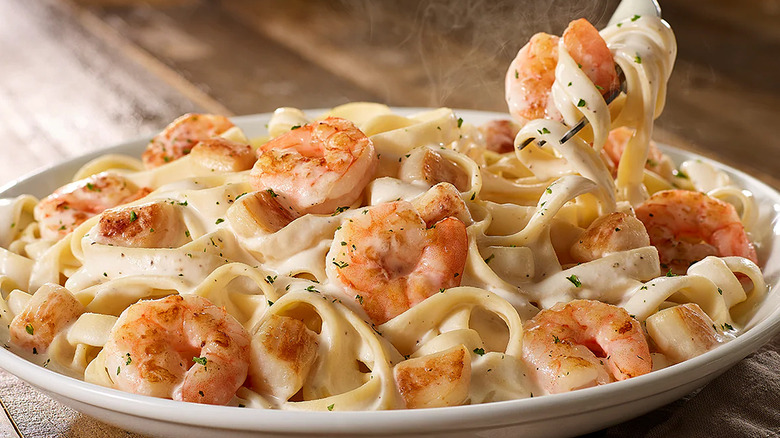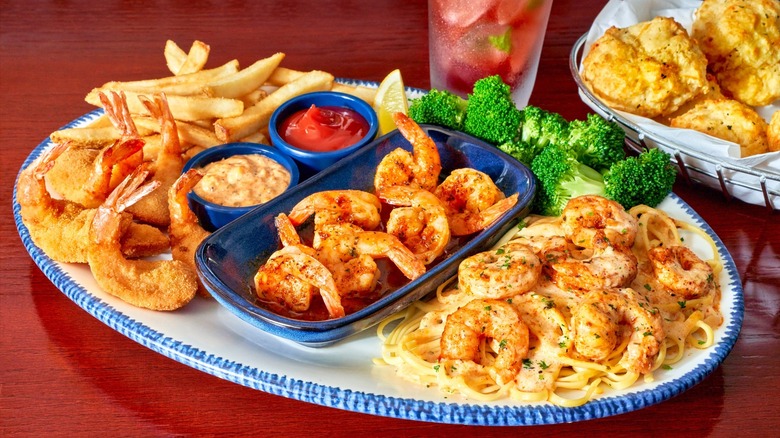Are Red Lobster And Olive Garden Owned By The Same Company?
Your mind isn't playing tricks on you. Olive Garden's breadsticks and Red Lobster's cheddar bay biscuits share an unusual policy. These "never-ending" and "unlimited" refills come served one at a time as the restaurants count on you getting full before eating too many. This shared policy isn't one that you imagined, it's due to both brands originally being owned by the same company.
As the brainchild of Bill Darden, the first Red Lobster opened in Florida in 1968. In 1970, the lucrative restaurant was bought by General Mills, which took the chain nationwide. Finding success in the restaurant industry, General Mills created the first Olive Garden in 1982, also in Florida, followed by Bahama Breeze, LongHorn Steakhouse, Seasons 52, and The Capital Grille. By 1995, these properties were back in the purview of Red Lobster's creator, under the newly formed Darden Restaurants Inc., which also operates Cheddar's Scratch Kitchen, Eddie V's, Ruth's Chris Steak House, and Yard House.
Olive Garden now has close to 900 locations. Notwithstanding its Floridian roots, the state with the most Olive Garden restaurants in the U.S. is Texas; the Lone Star state is home to 109 locations (per Scrapehero). On the other hand, with more than 700 restaurants worldwide, the state with the most Red Lobsters is its home base of Florida, with 59 locations (per Scraphero). In 2014, Red Lobster was sold to Golden Gate Capital. Thai Union, which had previously owned 25% of the business, purchased the chain outright in 2021.
Red Lobster may be in hot water
As one of the largest full-service restaurants in the country (per Statista), Olive Garden's business is booming under its current owner, with over $4.9 billion in annual sales — that's a lot of breadsticks! Red Lobster's financial situation, however, is on shakier ground now that it's no longer under the Darden family of restaurants. As reported in the LA Times, the company is eyeing filing for Chapter 11 bankruptcy as it struggles to pay its bills. This news comes on the heels of its main stockholder Thai Union's announcement that it was looking to divest itself of the brand (via Inc.com).
Ironically, it was an attempt to reel customers in with a good deal that has a lot to do with the company's current troubles. The restaurant's Endless Shrimp promotion brought in so many people eager to gobble up their fill of its delicious shrimp dishes that the move backfired, resulting in more than $23 million in lost profits.
To try and right the ship, Red Lobster was forced to raise prices on its Endless Shrimp deal. Despite the higher price and a similar Endless Lobster promotion, the company's dive into the deep end may prove to be too much to recover from. While it closes locations, restructures, and negotiates its debts, bankruptcy may be a last-ditch effort that can allow Red Lobster to stay open if it can manage to claw its way out of its hole.


